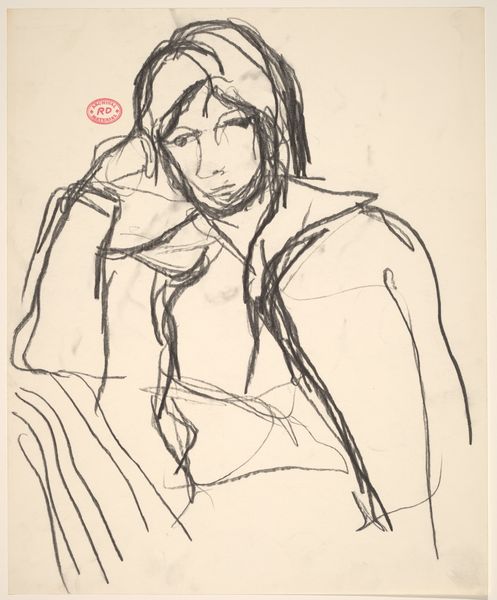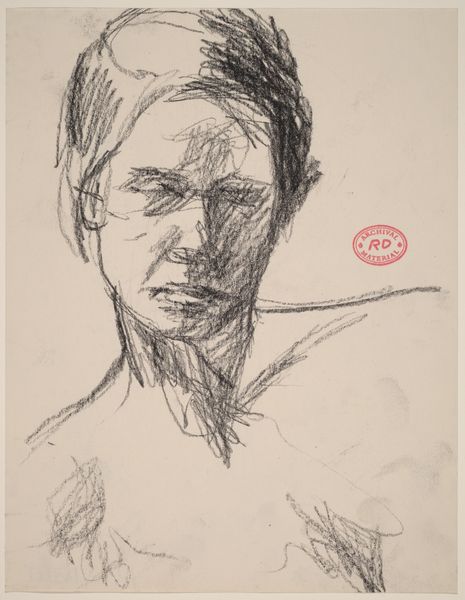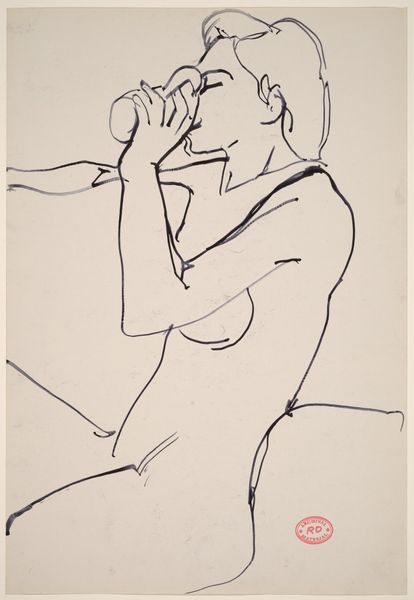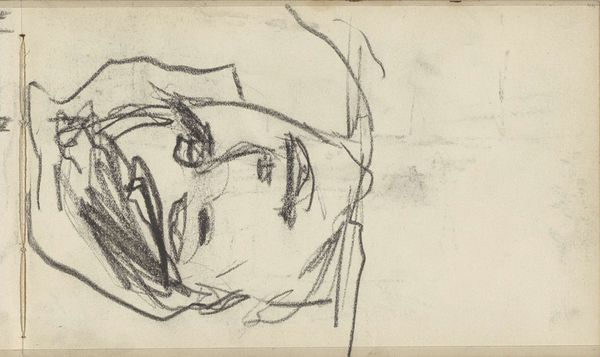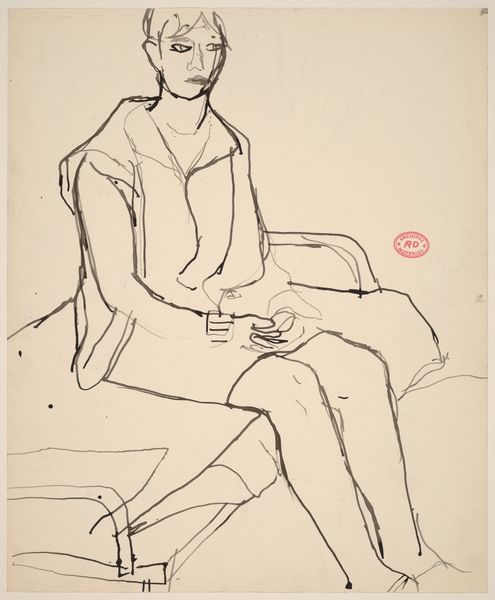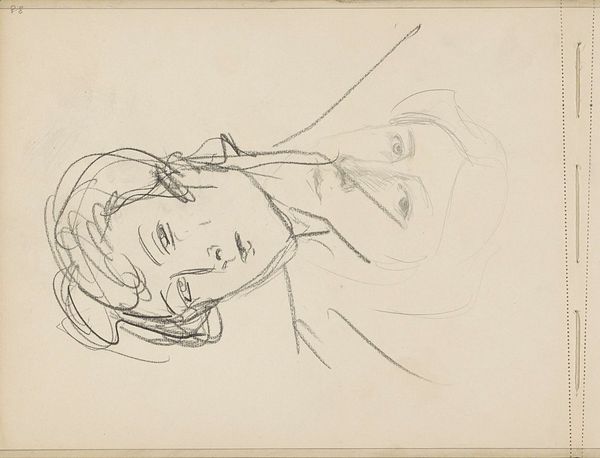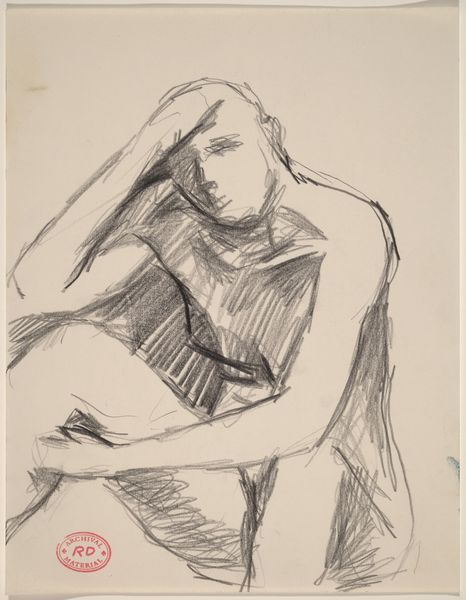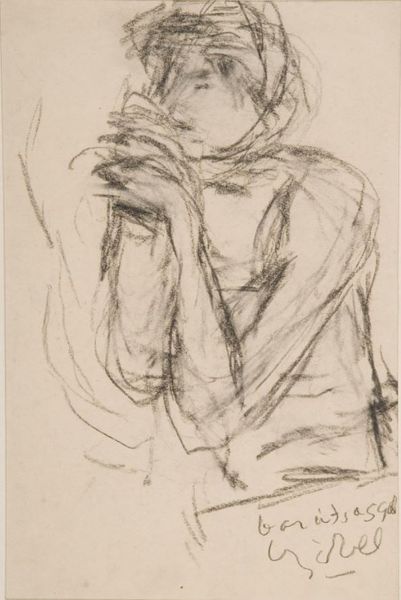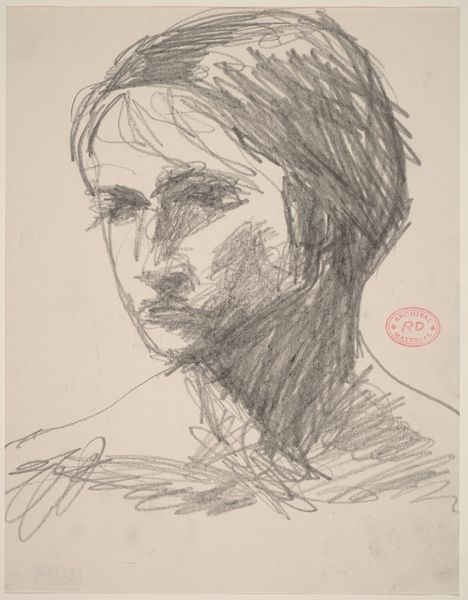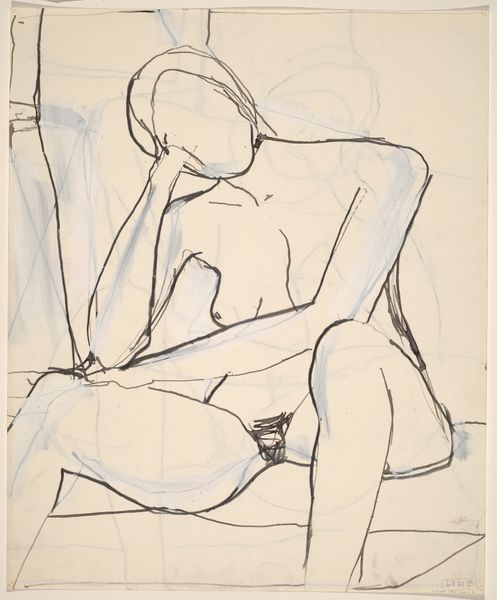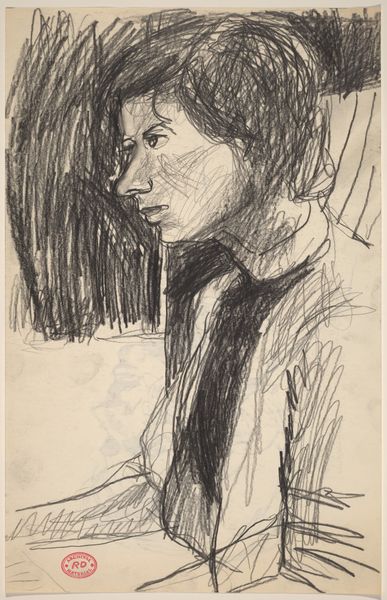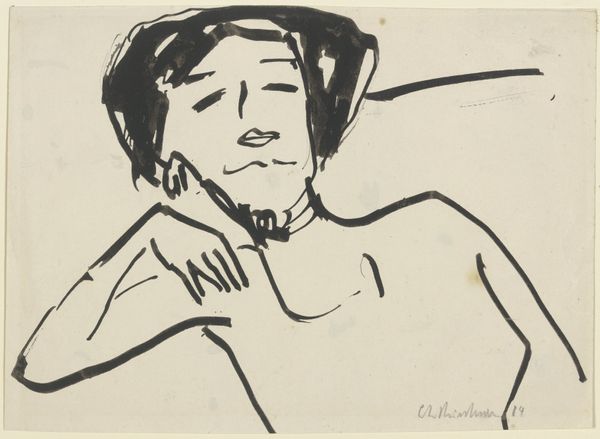![Untitled [portrait] by Richard Diebenkorn](/_next/image?url=https%3A%2F%2Fd2w8kbdekdi1gv.cloudfront.net%2FeyJidWNrZXQiOiAiYXJ0ZXJhLWltYWdlcy1idWNrZXQiLCAia2V5IjogImFydHdvcmtzL2NhZmY5ODcyLTBjNjMtNGFjYS1iNDBkLTk5YTRiODY1OTdkZi9jYWZmOTg3Mi0wYzYzLTRhY2EtYjQwZC05OWE0Yjg2NTk3ZGZfZnVsbC5qcGciLCAiZWRpdHMiOiB7InJlc2l6ZSI6IHsid2lkdGgiOiAxOTIwLCAiaGVpZ2h0IjogMTkyMCwgImZpdCI6ICJpbnNpZGUifX19&w=3840&q=75)
drawing, graphite
#
portrait
#
drawing
#
bay-area-figurative-movement
#
abstraction
#
graphite
Dimensions: overall: 31.6 x 43.2 cm (12 7/16 x 17 in.)
Copyright: National Gallery of Art: CC0 1.0
Curator: This drawing is an "Untitled Portrait" by Richard Diebenkorn, likely created sometime between 1955 and 1967. The medium is graphite on paper. Editor: The pose strikes me as contemplative, almost melancholic. There's something vulnerable about the tilt of the head and the way the hand obscures part of the face. Curator: Absolutely. Diebenkorn was deeply engaged with the figure throughout his career, even as he explored abstraction. There’s always a push and pull, a dialogue between observation and simplification, particularly visible during this period when he straddled figuration and pure abstraction. The legacy of artists like Matisse is undeniable, and there's an engagement here with their explorations of the figure. Editor: That struggle is fascinating. Notice how the lines are both confident and tentative; they imply so much more than they explicitly define. It gives the portrait an ephemeral quality, as if the subject might dissolve before your eyes. To me the heavy lines around the shoulders denote perhaps the psychological burden that is present. Curator: That speaks to the power of suggestion, doesn’t it? Diebenkorn isn’t simply transcribing what he sees. The stark black against the paper really heightens a sense of isolation and perhaps anxiety in postwar America, where ideas of conformity and anxieties are becoming really evident in artistic practice. Editor: Definitely. Graphically, the repeated use of lines in certain areas gives an added tension to the overall reading. It’s intriguing how the lines forming the subject's shirt seem incomplete; they abruptly stop which adds to the overall tension of a restless soul. Are these fragments, or is there something to be unearthed. Curator: He lets the process remain visible. Nothing is overworked or fussed over. He's showing us, very transparently, his working and editing process. The image and visual vocabulary speaks clearly about this. Editor: In its stark simplicity, the portrait becomes a mirror, reflecting back our own vulnerabilities and sense of isolation. The sketch quality lets our own projections fall onto it easily, almost as an archetypal reading. Curator: Exactly, which perhaps allows us to come into direct contact with ourselves as viewers as much as it informs on the depicted sitter. Thank you for that layered reading. Editor: Thanks, and that's what is so captivating, these images allow each of us to consider something beyond the strokes on paper.
Comments
No comments
Be the first to comment and join the conversation on the ultimate creative platform.
